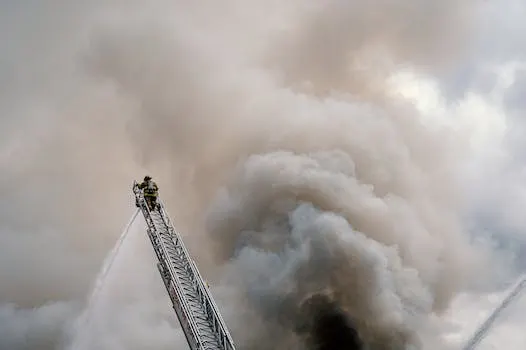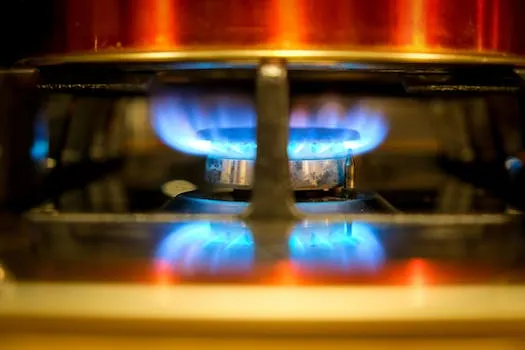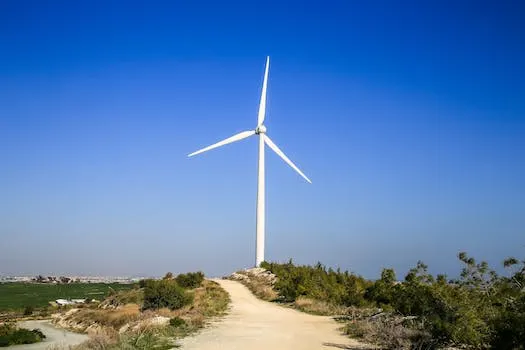
Types of Air Pollutants and Their Effects
Air pollution is a serious environmental health hazard that affects people all over the world. It is caused by both natural and human-made sources, and its effects can be severe. In this article, we will discuss the different types of air pollutants, their sources, and their effects on humans and the environment.
The most common air pollutants of major public health concern are particulate matter, carbon monoxide, ozone, nitrogen dioxide and sulfur dioxide. These pollutants are mainly found in large urban areas due to road emissions from cars and other vehicles. Additionally, mold spores from trees, weeds and grass can also be carried in the air due to climate change which can cause allergies or other respiratory issues for those living in these areas.
Human-made sources such as burning fossil fuels like coal or oil for energy production are also a major contributor to Air pollution. Other chemicals released into the atmosphere from industrial processes such as chemical production also contribute to poor air quality levels around the world. Air pollution consists of particles or chemicals that can harm humans as well as animals and plants by damaging buildings or causing respiratory illnesses when inhaled over long periods of time.
Climate change has been linked with an increase in ground-level ozone pollution which has been linked with various public health concerns including asthma attacks among children who live near heavily polluted areas. It is important for us to understand how these different types of pollutants affect our environment so that we can take steps towards reducing them before they cause further damage to our planet's atmosphere.
What are Air Pollutants?
Air pollutants are substances in the air that can cause harm to humans and the environment. Pollutants can be divided into two categories: primary pollutants and secondary pollutants. Primary pollutants are those that are emitted directly into the atmosphere, such as sulfur dioxide, carbon monoxide, and nitrogen oxides. Secondary pollutants are those that are formed in the atmosphere as a result of chemical reactions between primary pollutants, such as ozone, particulate matter, and nitrogen dioxide.
Primary air pollutants include particulates, carbon monoxide (CO), nitrogen oxide (NOx), sulfur dioxide (SO2) and volatile organic compounds (VOCs). These substances come from sources like motor vehicles or industrial processes. Carbon monoxide is a colorless gas produced by burning fossil fuels like gasoline or coal; it is toxic to humans when inhaled in large amounts over long periods of time. Nitrogen oxides come from burning fuel for transportation or electricity generation; they react with other chemicals in the atmosphere to form smog and acid rain which can damage crops and buildings. Sulfur dioxide is released when coal or oil is burned; it contributes to acid rain formation which can damage ecosystems by killing fish and plants. VOCs come from solvents used in manufacturing processes; they contribute to ground-level ozone formation which irritates lungs when inhaled over long periods of time.
The National Ambient Air Quality Standards (NAAQS) have been set for six common air pollutants: carbon monoxide, lead, nitrogen oxides, ground-level ozone, particle pollution (often referred to as particulate matter), and sulfur dioxide. Particulate matter consists of tiny particles suspended in the air that can be breathed deep into our lungs where they may cause health problems such as asthma attacks or heart disease if exposure occurs over long periods of time at high levels of concentration. Lead is a heavy metal pollutant found mainly near industrial sites where it has been released through emissions from factories or vehicles using leaded gasoline; it accumulates in soil where it may enter food supplies leading to health problems including neurological disorders if ingested at high levels over extended periods of time .
Air pollution also includes greenhouse gases like carbon dioxide which trap heat within Earth’s atmosphere causing global warming effects on climate change patterns around the world . Carbon dioxide comes primarily from burning fossil fuels for energy production but also results naturally from respiration processes within living organisms . nitrogen oxides released during combustion processes react with other chemicals forming smog while sulfur dioxides contribute towards acid rain formation both damaging ecosystems through their corrosive properties . Volatile organic compounds emitted during manufacturing processes combine with sunlight creating ground-level ozone which irritates lungs when inhaled over extended periods at high concentrations .
In conclusion , air pollution consists of various gases , particles , metals , vapors , dusts , mists etc., all having different sources ranging from natural causes like volcanic eruptions & forest fires ; human activities such as burning fossil fuels & agricultural practices ; & even indoor activities like smoking cigarettes & using aerosol sprays . The most common types include carbon monoxide , lead , nitrogen oxides , ground-level ozone , particle pollution & sulfur dioxides all having varying degrees of adverse effects on human health & environment depending upon their concentration levels present in ambient air quality standards set by NAAQS regulations worldwide .
Sources of Air Pollutants
Air pollutants can come from both natural and human-made sources. Natural sources of air pollution include volcanic eruptions, forest fires, and wind-blown dust. Human-made sources of air pollutants include the burning of fossil fuels such as coal, oil, and gasoline for energy production, industrial processes, and the use of chemicals such as pesticides and fertilizers. These pollutants can cause a range of respiratory diseases both acute and chronic.
Naturally occurring air pollutants include ash, soot, sulfur dioxide, ground-level ozone (also known as smog), salt spray, volcanic gases from eruptions or combustion gases from fires. Radon is also a naturally occurring pollutant that is found in some areas due to its presence in soil or rocks beneath the surface.
The major man-made source of air pollution is the burning of fossil fuels for energy production or transportation purposes such as motor vehicles or construction activity. This type of pollution often results in urban smog which consists mainly of nitrogen oxides (NOx) and volatile organic compounds (VOCs). Indoor air pollution can also be caused by cigarette smoke or other household products that contain hazardous chemicals like formaldehyde or benzene.
Air pollution affects national parks even though most are created outside park boundaries due to windblown dust carrying particles over long distances before settling on land within park boundaries. To reduce this type of air pollution it is important to reduce emissions from all sources including natural ones like wildfires or volcanoes by implementing better management practices for these events when possible.
Effects of Air Pollutants
The effects of air pollution on humans and the environment can be severe. Air pollutants can cause a variety of health problems, including respiratory and cardiovascular diseases, lung cancer, and asthma. Moreover, air pollution seems to have various malign health effects in early human life such as respiratory, cardiovascular, mental and other issues. Long-term exposure to air pollution can cause cancer and damage to the immune, neurological, reproductive and respiratory systems.
Air pollution affects all things; it is harmful to our health and it impacts the environment by reducing visibility and blocking sunlight causing acid rain which damages crops. Numerous scientific studies have linked particle pollution exposure to a variety of problems including premature death in people with heart or lung disease as well as other serious illnesses such as stroke or heart attack. Exposure to high levels of particulate matter for example can lead to reduced lung function respiratory infections aggravated asthma from short-term exposure or even death from long-term exposure.
Long-term health effects from air pollution include heart disease lung cancer chronic obstructive pulmonary disease (COPD) bronchitis emphysema asthma allergies stroke coronary artery disease cognitive decline preterm birth low birth weight type 2 diabetes kidney damage liver damage neurodevelopmental disorders reproductive disorders vision impairment hearing loss skin irritation headaches nausea dizziness fatigue anxiety depression stress aggression violence suicide ideation impaired quality of life increased mortality rates among vulnerable populations such as children elderly people pregnant women outdoor workers etcetera. In addition global climate change is also attributed largely due to air pollutants released into the atmosphere which has caused extreme weather events like floods droughts heat waves hurricanes etcetera leading to displacement destruction loss of lives property economic losses etcetera across many parts of the world today making it one of the most pressing environmental issues that needs urgent attention now more than ever before!
Types of Air Pollutants
The United States Environmental Protection Agency (EPA) regulates six primary air pollutants: Carbon Monoxide (CO), Nitrogen Oxides (NOx), Sulfur Dioxide (SO2), particulate matter (PM), Lead (Pb) and Ozone (O3). These pollutants are known as criteria air pollutants, and the EPA has set National Ambient Air Quality Standards for each of them. Particulate matter, carbon monoxide, ozone, nitrogen dioxide and lead have all been identified as having a strong empirical evidence for public health concern.
Particulate Matter is one of the most common criteria air pollutants regulated by the EPA. It is composed of tiny particles that can be inhaled deep into the lungs where they can cause serious health problems such as asthma attacks or even cancer. Carbon Monoxide is a colorless and odorless gas that can be found in vehicle exhausts or from burning fuel in homes or businesses. It reduces oxygen delivery to organs like the heart and brain which can lead to serious health issues such as headaches, dizziness or even death in extreme cases.
Nitrogen Oxides are produced when fuel is burned at high temperatures such as those found in car engines or power plants. They contribute to smog formation which has been linked to respiratory illnesses like bronchitis and emphysema. Sulfur Dioxide is another pollutant released from burning fossil fuels like coal which contributes to acid rain formation leading to damage of forests, crops and aquatic life forms. Lead pollution comes mainly from industrial sources but also from gasoline additives used before their ban in 1995 by the EPA due to its toxicity effects on humans including neurological damage especially among children who are more vulnerable than adults due to their developing bodies.
Finally Ozone pollution occurs when nitrogen oxides react with volatile organic compounds under sunlight forming ground-level ozone which irritates eyes, throat and lungs leading to coughing fits or difficulty breathing among other symptoms associated with it’s inhalation over long periods of time . All these six criteria air pollutants have been identified by the EPA as having a strong empirical evidence for public health concern making it important for us all take action against them through reducing our emissions whenever possible so we can protect ourselves against their harmful effects on our environment and our own health .
Carbon Monoxide (CO)
Carbon Monoxide (CO) is a deadly, colorless, odorless gas that can be produced by the incomplete burning of any carbon-containing material, such as gasoline, coal, wood and propane. It is often referred to as the “silent killer” due to its lack of smell or taste. Mild exposure to CO can cause symptoms such as nausea, dizziness or headaches; while severe poisoning can result in brain or heart damage or even death. Symptoms of CO poisoning are similar to those of the flu and include headaches, fatigue, nausea, dizziness and confusion. Continued exposure can lead to vomiting and loss of consciousness. In extreme cases it may even cause death within minutes if not treated quickly enough. To prevent CO poisoning it is important to ensure that all fuel-burning appliances are properly installed and maintained according to manufacturer's instructions. Additionally it is important for people living in areas with high levels of air pollution from motor vehicles or industrial sources to take extra precautions when outdoors by wearing protective masks when necessary.
Nitrogen Oxides (NOx)
Nitrogen oxides (NOx) are a group of gases that are produced when fossil fuels are burned. These air pollutants, which include nitric oxide and nitrogen dioxide, can react with other pollutants in the atmosphere to form smog and acid rain. Nitrogen dioxide is a major air pollutant that is not usually released directly into the air but forms when nitrogen oxide (NO) and other nitrogen oxides combine with oxygen in the atmosphere. NOx emissions come from car exhaust, coal power plants, factories manufacturing nitric acid, and refining of petroleum products. Smog created by these emissions can be harmful to humans, animals, and plants as it damages the respiratory system and can even kill vegetation. It is important to reduce NOx emissions in order to protect our environment from their damaging effects.
Sulfur Dioxide (SO2)
Sulfur dioxide, or SO2, is a colorless gas or liquid with a strong, choking odor. It is produced from the burning of fossil fuels such as coal and oil. Sulfur dioxide enters the atmosphere and is eventually deposited on terrestrial and freshwater ecosystems. Oxides of sulfur (also called SOx) are highly reactive gasses that mainly result from the burning of compounds containing sulfur. All fuels commonly used by humans contain some amount of sulfur, so human activity is responsible for most sulfur dioxide in the atmosphere - 99% to be exact. Volcanoes are also a natural source of sulfur oxides in the atmosphere but their contribution pales in comparison to human activity.
Sulfur dioxide has serious effects on both human health and our environment. In humans it can cause respiratory problems such as asthma and bronchitis when inhaled over long periods of time at high concentrations. It also contributes to acid rain which can damage crops, forests, buildings and other infrastructure when it falls back down to earth after being released into the air by combustion processes like those used for generating electricity or heating homes with coal-fired furnaces.
The pollutants that cause acid rain are primarily nitrogen oxides (NOx) and sulfur oxides (SOx). Of these two pollutants, SO2 has been found to be more damaging due to its ability to form sulfate particles which can travel further distances than NOx particles before settling out of the air column onto land surfaces below where they contribute significantly more acidic deposition than NOx particles do alone.
To reduce emissions of SO2 into our atmosphere various regulations have been put in place around the world including limits on how much fuel may be burned without proper emission control technology installed at power plants or other industrial facilities that burn fossil fuels like coal or oil for energy production purposes. Additionally there have been efforts made towards switching away from using fossil fuels altogether towards renewable sources like solar energy which produce no emissions whatsoever when generating electricity for homes or businesses alike!
Particulate Matter (PM)
Particulate Matter (PM) is a complex mixture of solid particles and liquid droplets that can be found in the air. It is composed of hundreds of different chemicals, including dust, dirt, soot, smoke, and liquid droplets. PM can come from a variety of sources such as construction sites, power plants, vehicle exhausts and other industrial activities. PM has been linked to serious health problems such as respiratory and cardiovascular diseases as well as premature death. Inhaling these tiny particles can cause inflammation in the lungs which can lead to difficulty breathing or even asthma attacks. Long-term exposure to particulate matter has also been linked to an increased risk for heart attack or stroke due to its ability to enter the bloodstream through the lungs. It is important for people living in areas with high levels of PM pollution to take precautions by limiting their outdoor activities when air quality is poor and wearing protective masks when necessary.
Lead (Pb)
Lead is a toxic metal that is found naturally in the Earth's crust, but can also be released into the air through human activities such as burning fossil fuels and manufacturing. Lead exposure can have serious health effects, particularly for children, as it can damage the nervous system and kidneys. No safe level of lead exposure has been established, and even low levels of lead in the body can cause permanent damage to neurological and cardiovascular systems. Lead is present in all parts of our environment due to human activities such as burning fossil fuels, mining, and manufacturing. It is important to take steps to reduce lead pollution by limiting these activities or using cleaner alternatives whenever possible.
Ozone (O3)
Ozone is a gas found naturally in the atmosphere, and it plays an important role in protecting us from the sun's harmful ultraviolet radiation. In the stratosphere, ozone molecules absorb UV radiation and shield Earth from dangerous rays. However, at ground level ozone can be a major air pollutant that causes respiratory problems such as asthma and bronchitis. It is also a major contributor to global climate change due to its ability to trap heat in the atmosphere.
Oxides of nitrogen (NOx) and volatile organic compounds (VOCs) released into the atmosphere can react with solar irradiation to form ground-level ozone. This type of ozone is known as “bad” because it has negative effects on human health when present in high concentrations. Ozone at ground level can cause irritation of eyes, nose, throat and lungs; worsen asthma symptoms; reduce lung function; increase risk of respiratory infections; aggravate existing heart disease; damage crops and trees; reduce visibility by forming smog; and contribute to global warming by trapping heat in the atmosphere.
It is important for people to understand how their activities affect air quality so they can take steps towards reducing their contribution to air pollution levels. Reducing emissions from vehicles, controlling industrial processes that produce NOx or VOCs, using cleaner burning fuels such as natural gas instead of coal or oil for energy production are all ways individuals can help reduce ground-level ozone concentrations while still enjoying all the benefits that come with modern life.
Conclusion
Air pollution is a serious problem that can have devastating effects on our health and the environment. From chemicals and particles in the air to groundwater, soil, and air contamination, air pollution can cause a variety of health issues. One third of deaths from stroke, lung cancer, and heart disease are due to air pollution. Exposure to these pollutants can enter our bloodstreams and contribute to coughing or other respiratory diseases such as chronic obstructive pulmonary disease (COPD) or emphysema. It is important that we recognize the sources of these pollutants, take steps to reduce emissions, and take action to protect ourselves from their harmful effects. We must all work together in order for us to make a difference in reducing air pollution levels so that we can ensure a healthier future for generations to come.









